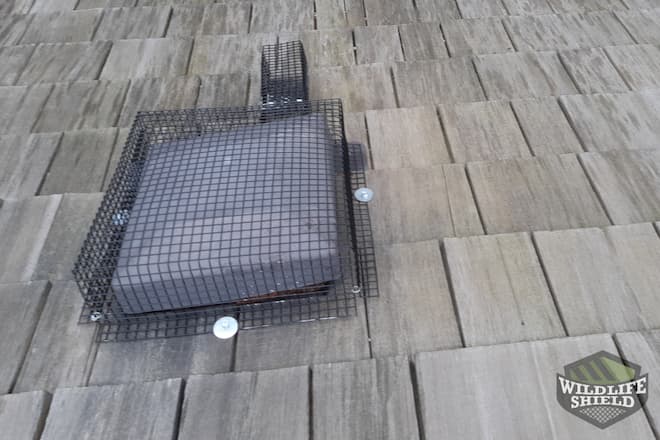The following case study details a squirrel removal and wildlife-proofing service that required multiple visits in Toronto, Ontario. It was winter, and squirrels had chewed their way through a vent on the roof to nest in the attic below. Because of snow and ice, the technicians involved had to approach the situation carefully and use the utmost caution. A comprehensive wildlife-proofing of the roof has since left this Toronto home pest-free.
First Inspection
The homeowners in this case first reached out to Squirrel Control’s sister company The Exterminators, when they had wasps nesting on the peak of their roof. A few weeks after the wasps were successfully removed, in early January, they called us back to report that squirrels had been living in the attic. The homeowners could hear rustling, scratching, and squealing sounds coming from the attic throughout the day and witnessed a lot of squirrel activity on their property. These are typical signs of a squirrel invasion, which are very common throughout the Toronto area.
A technician from Squirrel Control arrived the next day to investigate the problem. Given that animals were being heard inside the attic, the roof was investigated first. Squirrels often break into the attic by chewing their way through the roof’s edge, roof vents, soffits, or any damaged area on the roof. Once inside, they like to nest in the insulation where they can be warm and safe from predators. In this case, a squirrel had chewed its way through a plastic roof vent.

Given the entry point in the roof vent, the technician on site recommended installing a one-way door to that vent to let the animals out safely. In addition to the one-way door, it was recommended that the roof vents be covered in a squirrel-proof mesh to prevent further invasions. The homeowner immediately agreed to go ahead with the work and evict the squirrel from the property.
Removal and Exclusion
The technician capped the chewed roof vent with mesh and included a one-way door to it so that the animal would be forced to leave the attic. Contrary to popular belief, squirrels do not hibernate and must leave their nests from time to time to find food. The squirrel would likely make its way through the one-way door within a few days or weeks. Like a trap, the one-way door contains a flap that only swings outward. But, unlike a trap, it is open-ended to let the animal out safely.
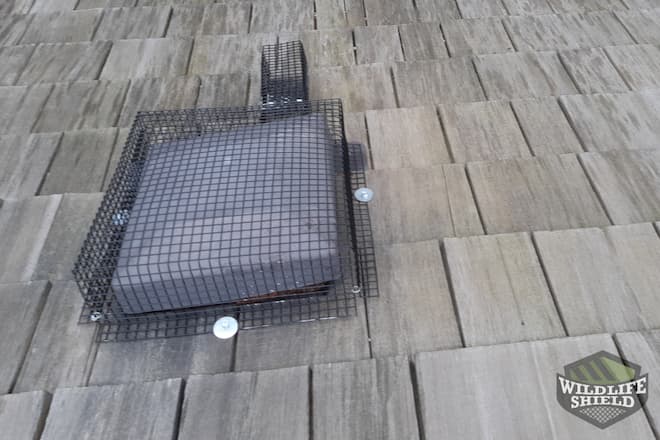
Once the one-way door was installed, the technician then capped the other 13 roof vents with galvanized steel mesh, a material strong enough to withstand rodent chewing and tearing. This is a flexible, durable material that continues to let the air flow through the roof vents. Because squirrels tend to come right back to their nests after they have been evicted, it is important that other similar entry points be sealed off. This would help stop the squirrel from getting back into the attic.
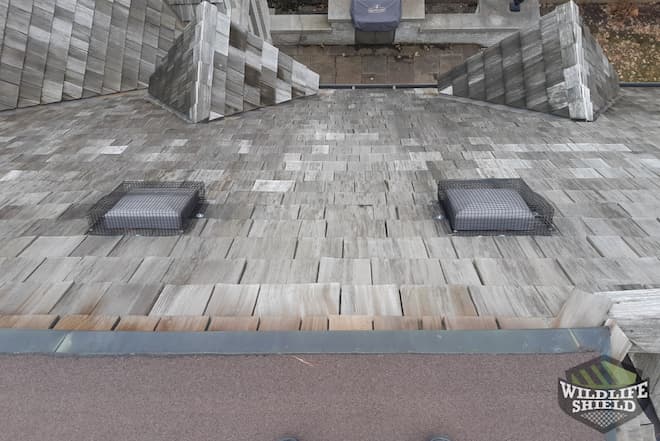
Two weeks later, the homeowners of this Toronto property reported that they were no longer hearing any squirrels. The animals had likely exited the attic through the one-way door. A technician then returned to remove the door and replace it with a regular vent cap, but only once it was safe to do so. The shingles on this roof were made of cedar and there was snow and ice on the roof, making it too slippery to access immediately.
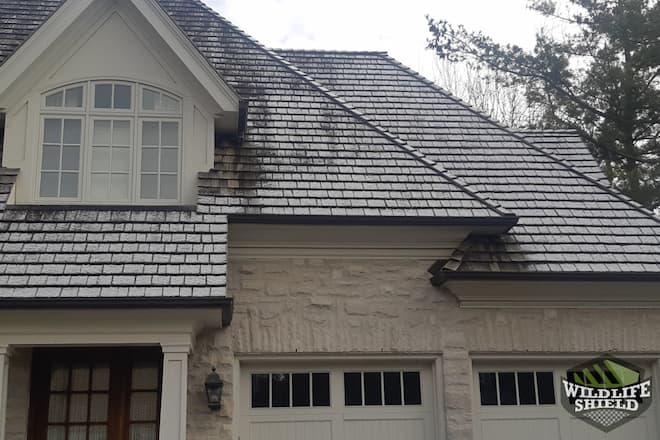

Follow-up and Re-entry
Weeks later, in May, the residents of this Toronto home called Squirrel Control again to say that they were hearing noises again in the mornings, but this time they were close to the chimney. They were unsure if it was the same squirrel or a new case entirely. A technician promptly returned to the property to have a look. With every job, we will return to investigate the issue for free. If the contractual pest broke through our work, we will also fix it at no extra charge.
Upon investigating the roof, the technician found that a squirrel had chewed its way through the roof’s edge, near the chimney. The roof vents were still intact, so the squirrel that had entered the attic the first time may have decided to gnaw its way in again through the roof’s edge, instead. This is a common point of entry for squirrels. The edges of the roof often warp with time and crack away from the framing of the house, presenting an opportunity for squirrels to widen these gaps with their teeth and make their way inside.

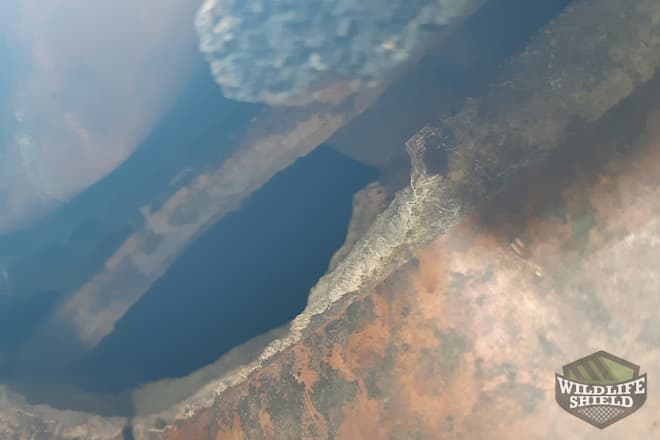
In response to the break-in, the technician on duty installed a one-way door to the new opening in the roof. This would let the squirrel out again but prevent its re-entry. Once out, the hole would be sealed like the last.
Within a few days, the squirrel was gone, and it had given up this time. The one-way door was removed and immediately replaced with galvanized steel mesh to ensure that the animal could not return through the same opening. No squirrels have been back since.
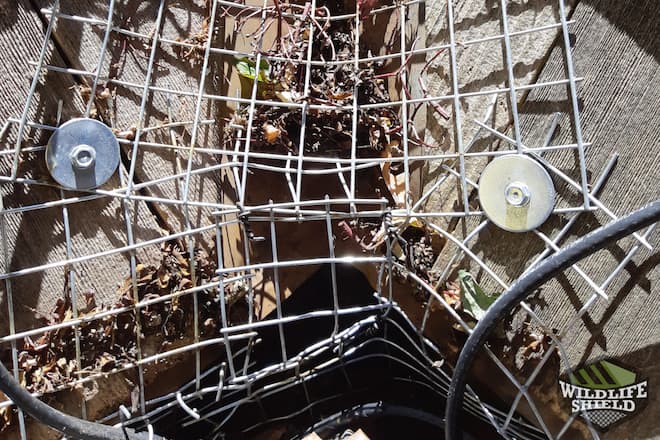
Conclusion
This case demonstrates the importance of maintaining one’s roof and protecting its vulnerabilities from squirrels. Squirrels are persistent creatures that, when removed from a space, may find another weakness in the structure to get back to where they were before. It is therefore important that you hire a wildlife removal company that is determined to get to the bottom of your pest issue and do whatever it can to solve the problem. The technicians at Squirrel Control are thoroughly trained and highly experienced in all manner of wildlife removal. For safe, affordable, and reliable wildlife removal and proofing service, call Squirrel Control.
